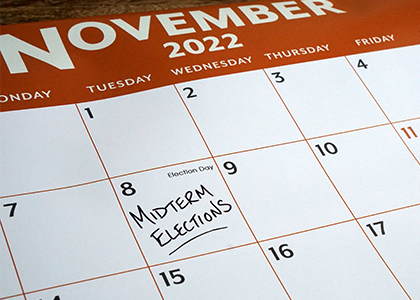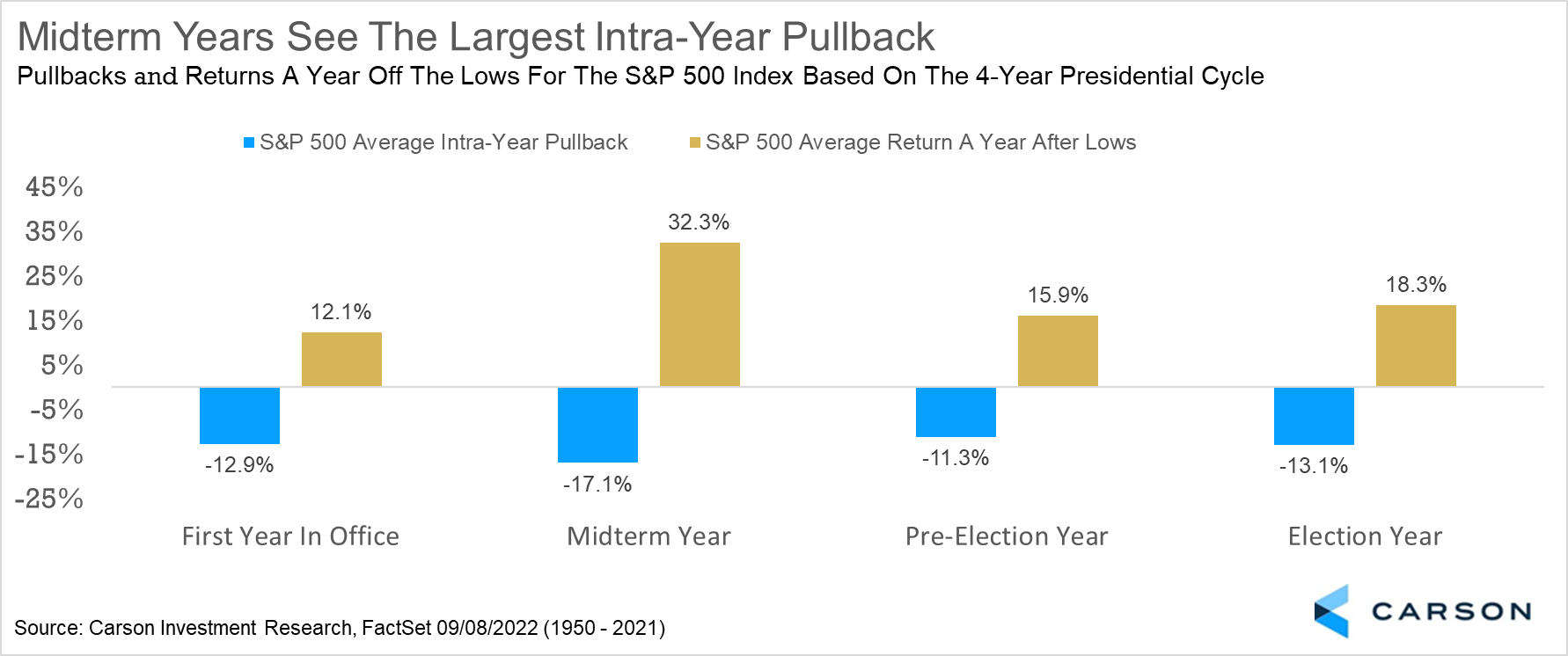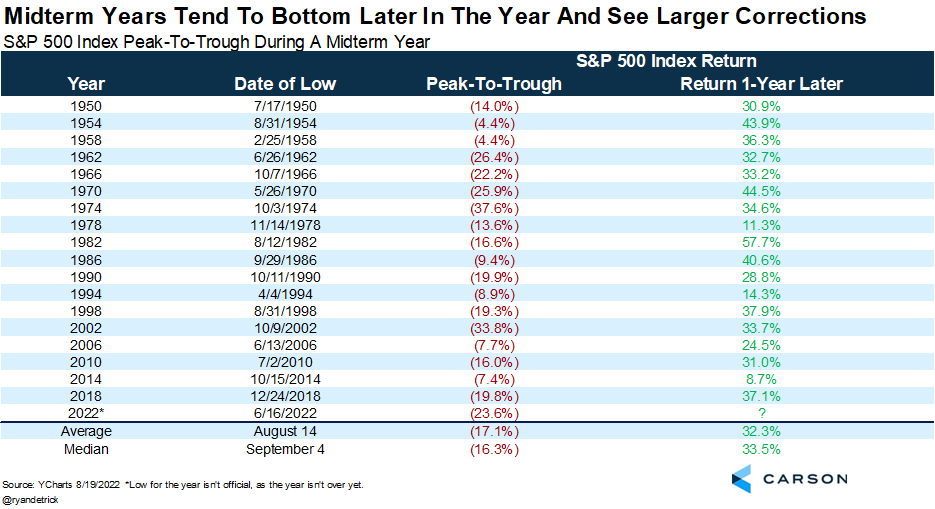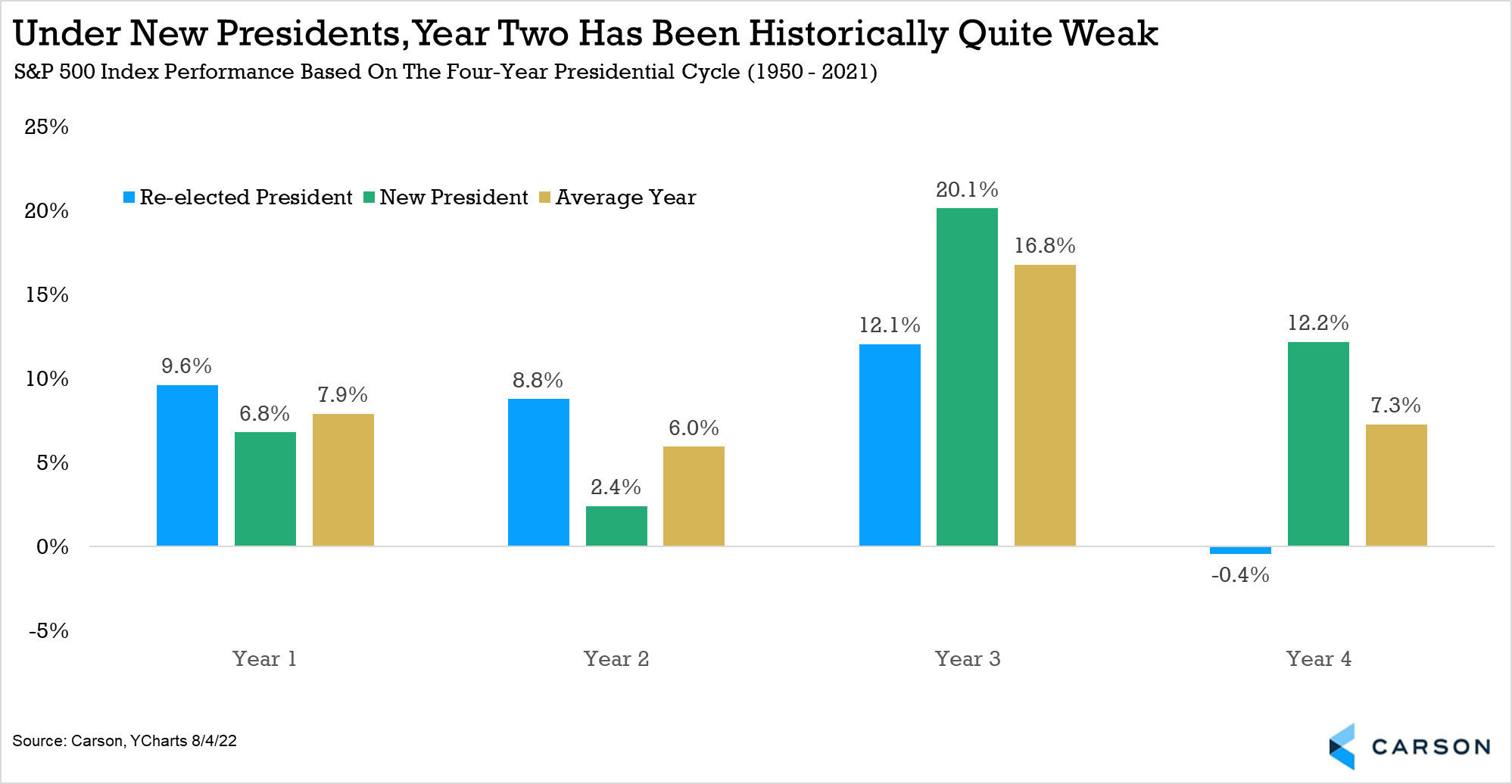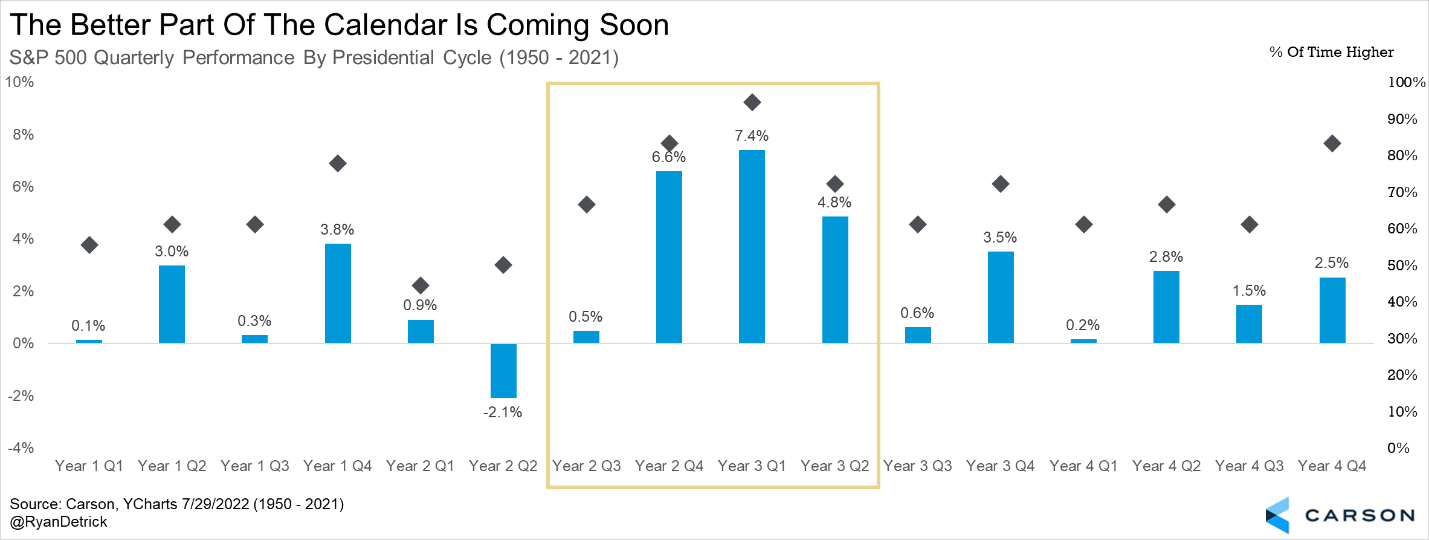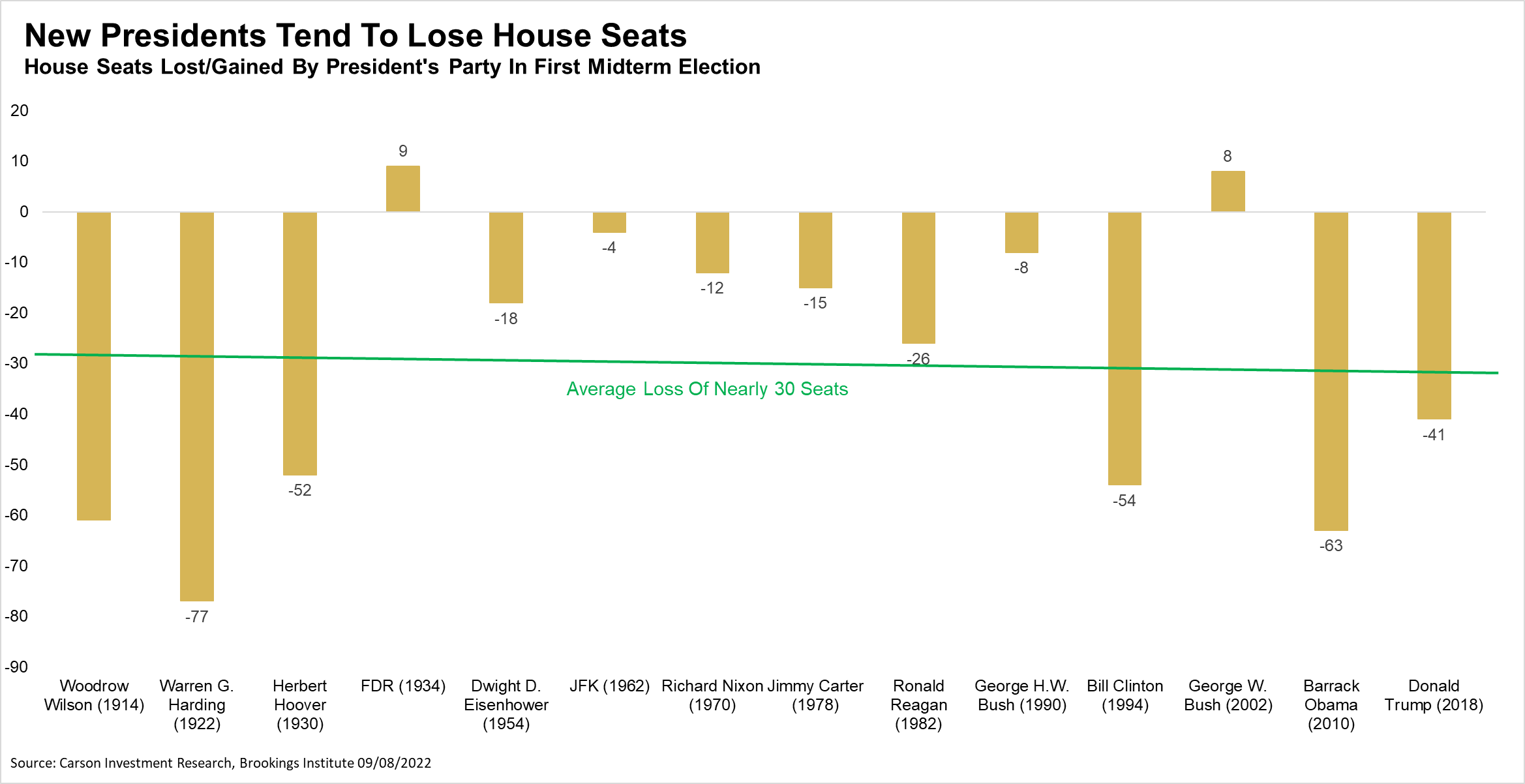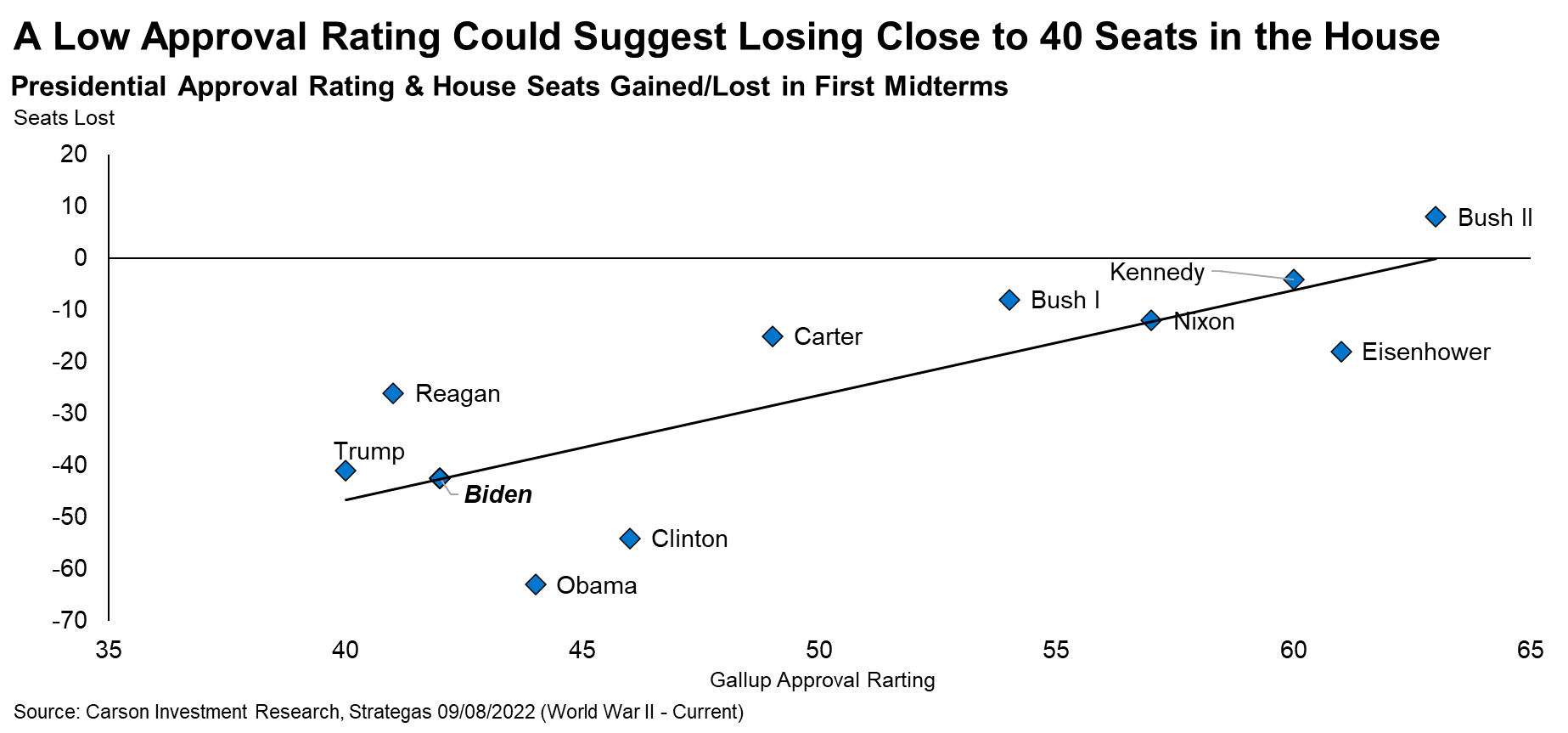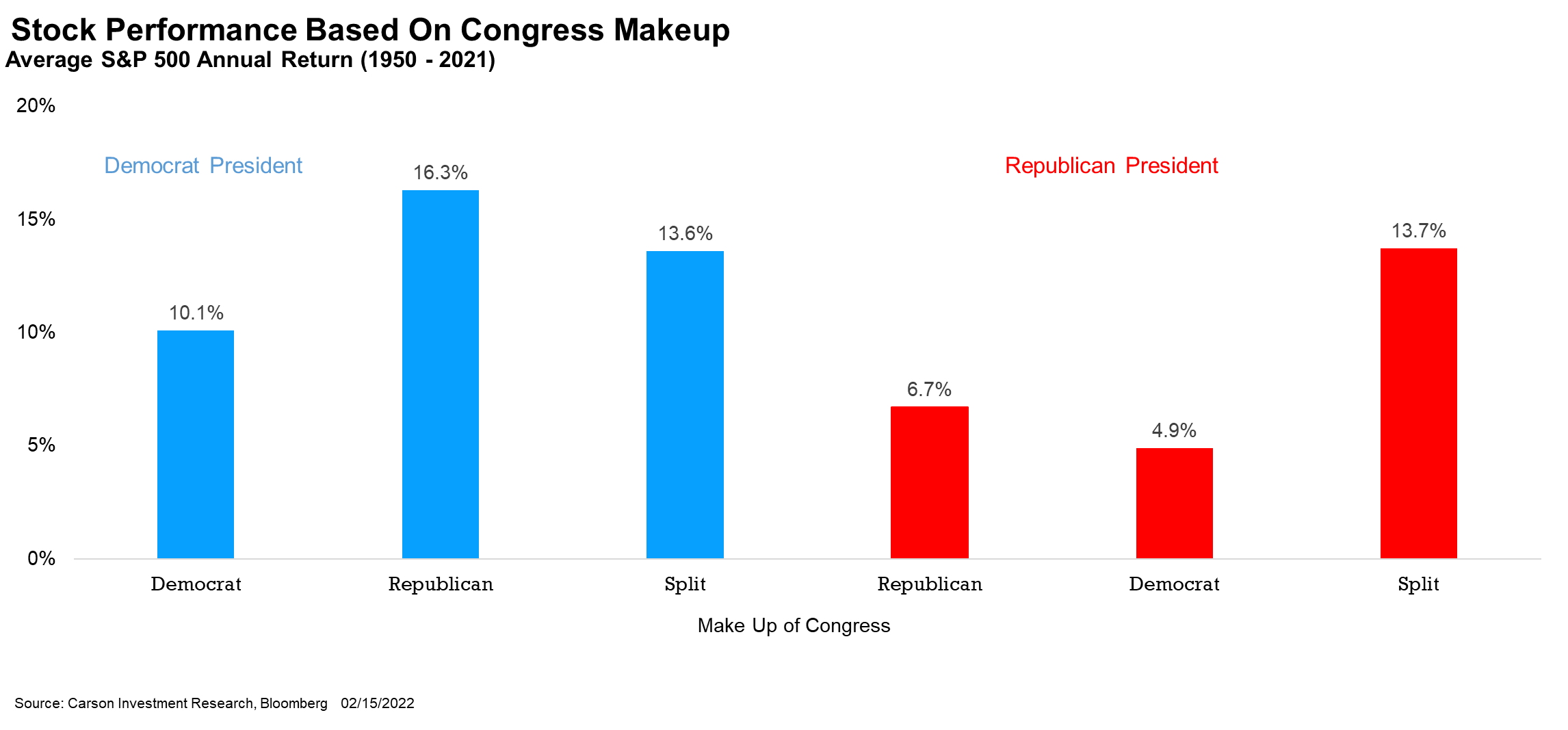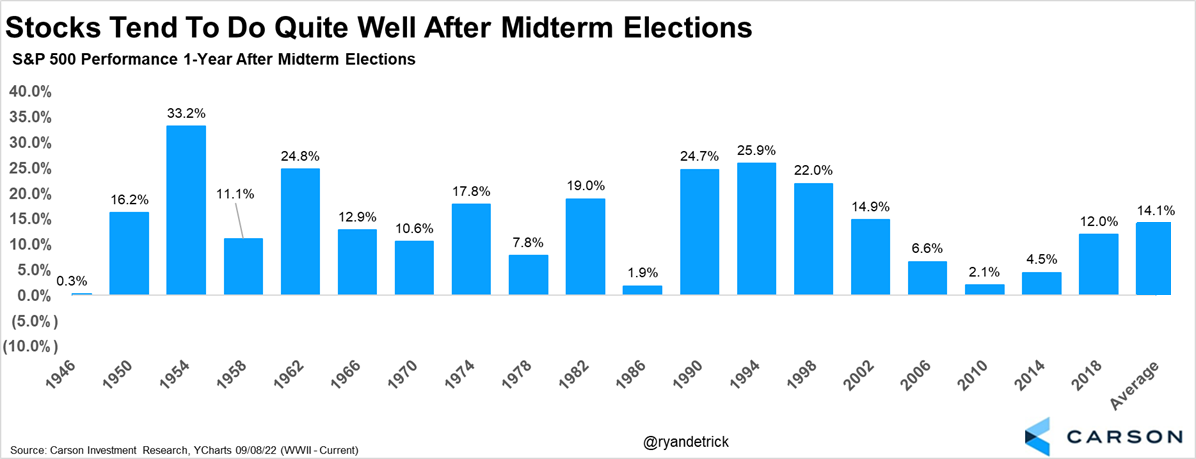First things first, the Carson Investment Research team would like to send our condolences to the Queen’s family, and all of our friends in the UK. We lost a great one yesterday and the world is a better place because of her.
Midterm elections are right around the corner, as this week marked two months from the always important election. Although this year investors have been more worried about inflation, the war, the economy, and the stock market than the election, one thing that is playing out once again is midterm years tend to be volatile.
The Calendar
As our first chart shows, the average midterm year since 1950 corrected 17.1% on average, the most out of the four-year presidential cycle. That’s the bad news, the good news is stocks gained 32.3% on average a year off those lows and have never been lower. Although we don’t know if June 16 is officially the lows or not, there could be a lot of opportunity for bulls over the coming year.
Here’s another look at the same thing, but breaking it down by each year.
Should we be surprised that stocks have had a tough go so far in 2022? Maybe not, as this next chart shows the worst time for stocks is a midterm year under a new President. With the S&P 500 up only 2.4% on average these years, it helps put the disappointing year so far into perspective. Now check out what happens the following year, which might be something many investors could be smiling about soon enough.
Here’s one more look at how stocks do based on the calendar. Below we’ve broken returns down by each quarter out of a 4-year presidential cycle. Sure enough, the first three quarters of a midterm year are historically quite weak, some of the worst out of the entire cycle actually. Once again though, we are on the cusp of some of the strongest quarters coming up and investors need to take notice of the positive seasonality right around the corner.
What About The Election?
Historically the party that loses the election is the motivated party and they tend to gain seats in the House and Senate. In fact, since World War I, the winning party lost nearly 30 seats on average at the first midterm election. FDR during the Great Depression and George W. Bush (post-9/11) are the only two instances when the President’s party gained seats in the House.
Please don’t shoot the messenger here, but President Biden’s approval ratings have been among the worst ever at this point of a new Presidency. In fact, his current Gallup approval rating of 42% extrapolates out to approximately a 40 seat loss in the House for the Democrats.
What does it mean for investors? Well, Republicans need to win only five seats to regain control of the House, which is quite likely at this point. The Senate is more of a coin toss, but history shows 4 seats have been added by the motivated party since World War II. With the Senate split 50/50 right now, this one is very close to call, but the Republicans could gain one seat and take full control of Congress. As the chart below shows, the very best scenario for stocks is a Democratic President and a Republican controlled Congress. Should the Democrats retain control of the Senate, that scenario of a Democratic President and split Congress is quite strong for stocks as well.
Leave On Some Good News
Odds are investors will start to hear a lot more about the midterm elections over the coming weeks. You might hear that these sectors will do well if so and so wins, or that these sectors will do poorly if this happens. The truth is no one really knows. After President Trump won in 2016 it was widely assumed coal and steel would do great, the opposite happened. Then under President Biden green energy was to do great and dirty crude and coal would struggle, again, the opposite has happened. We aren’t saying you shouldn’t think like this, it just isn’t so clear cut.
What is clear cut is stocks historically have done quite well the year after the midterms. As you can see in our last chart, the S&P 500 gained a year after the election every single time since World War II, with a very solid 14.1% average gain over that year. Why is this? Likely markets hate uncertainty and there is a lot of that leading up to a midterm election. But once the election is over the uncertainty is likely lifted.
So there you have it. Midterm elections are very important for a lot of reasons, but the best part for investors is once the election is over, stocks tend to get a nice tailwind. On the Carson Investment Research team we think this could happen once again and is one reason why we remain overweight stocks here.
Please continue to read our blog as we will continue to break it all down for you.

